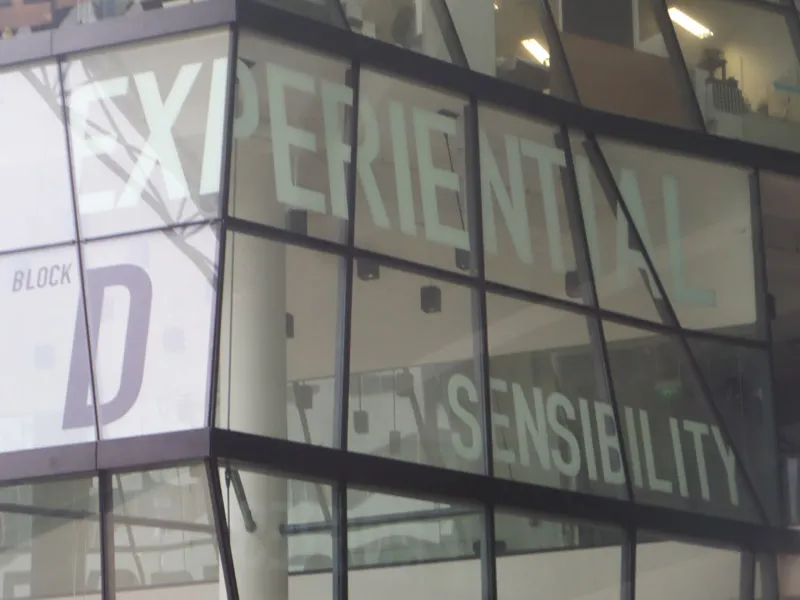Uniqueness, openness and perseverance: 10 tips for experience design from Singapore Design Week
The transformation of product and service design into experience design is a major trend in the field of innovation and performance excellence. The interdisciplinary nature of the field was well showcased at the Singapore Design Business Summit, which kicked off with a panel on ‘Designing Better Experiences.’ The panel at Lasalle College featured a range of speakers from Europe and Asia, and covered topics from psychology and ethnography to storytelling and interaction design. See also my earlier article, ‘8 tips for product developers from Singapore Design Week.’

- Create unique experiences
“Be disruptive. Do something different,” advised David Gober, CEO, Elmwood. He cited legendary Grateful Dead guitarist Jerry Garcia in this regard: “You do not merely want to be considered just the best of the best. You want to be considered the only one who does what you do.”
“Your brand should stand for something unique,” Godber added. For example, Virgin Airlines wants to make travel a fun experience right from the beginning, and not necessarily an activity that has to be rushed through. Durex promotes not just the safety of sex via condoms but the joy and bliss of sex; it addresses not just condoms as a product but sex as an awesome experience.
- Master cross-cultural experience design
In a world of increasing globalisation and business velocity, it is becoming important to master the art of replicating and localising experiences from one cultural group to another. Though many design concepts and models are global in nature, they need to be fleshed out in local flavours and cultural contexts.
“We designed a rooftop bar with the name ‘Loof’ because that’s how Chinese pronounce ‘Roof,’” joked Chris Lee, Founder of Asylum Creative. Given the frequent showers in Singapore, special foldable ‘rain covers’ were also designed for customers to cover their heads with, and had branded messages on the covers. Singapore is a good design hub for Asia and the West, with multiple ethnic groups in a microcosm, Lee added.

- Change for design comes from within
Durable design for effective experiences comes only if the culture for transformation is driven from within and across the organisation. “We use the term ‘Transformation Design’ to address this approach, which involves a blend of strategy, leadership and design,” said So-Young Kang, CEO, Awaken Group. The desire to create a good experience for customers needs to be reflected in the vision, messaging, processes and innovations of the organisation. This has been implemented by the Awaken Group in the Singapore Housing and Development Board.
- Honesty matters
“Have an authentic attitude. Brands are built on truth,” said David Godber, cautioning that news of a bad customer experience travels in a viral manner – but so do good news and humour. The message of the brand should also be simple and focused, and not make extravagant claims.
- Tell ‘sticky’ stories
Commitment to create good experiences can be driven by effective storytelling to inspire and empower individuals, and leadership development to encompass channels and brands, said So-Young Kang. “Tell ‘sticky’ stories. Brand is memory,” added David Godber. The experience of the brand applies internally to employees as well. Energy company SSE’s motto is ‘Proud to make a difference,’ and that has instilled a sense of dignity and honour in the workforce.
- Prioritise and focus
Good experience is not just about a wide range of choices but the simplicity of the activity. “Deciding what you will not do is as important as deciding what you will do,” advised David Godber.

- Learn to live with risk and failure
Creating new experiences for customers also calls for courage. “You have to learn to take risks because it is getting harder and harder to predict how the world is changing,” said So-Young Kang of Awaken Group. “We run into failure almost every day. Your slogan should be ‘Always perfect yourself!’ If you take away nothing from a failure, then it’s a wasted failure and a lost story,” she said. “Treat failure as a way to uncover your ignorance about a problem or the market,” advised Tim Kobe, Founder of EightInc. (See also my review of the related book, ‘The Wisdom of Failure.’)
- Be ready for scale and openness
Thanks to social media and ubiquitous smartphones (and soon IoT as well), the number of touchpoints for organisations with consumers is increasing. “Good design is becoming even more important for experiences,” said David Godber. Experience designers must be willing to be open to new ideas and to change continuously, added So-Young Kang.
- Use social media as a tool for discovery
The proliferation of social media has created a huge pool of insights on customer needs and experiences. “Social media has created a democratisation of information and conversation. But a number of brands are still in push mode, not in discovery mode,” said David Godber. Brands should not just say what they do but explain why and how they do it in their experience design. This requires effective strategies and skills for engaging in global consumer conversations, said Tim Kobe of EightInc. The Gap tried to crowdsource the design of its logo but the exercise turned out to be a flop, he cautioned.
Social media engagement requires deep organisational commitment in order to improve customer experiences. “Many companies think their social media strategy can be handled by a 20-year old tweeting about the brand!” joked Chris Lee of Asylum Creative.
- Keep innovating
One set of successful customer experiences is not enough for long term business success; an organisation must continuously innovate and be ready to disrupt its own products and experiences (see my review of the related book ‘Unrelenting Innovation.’) “Innovation is temporary. Even Apple’s advantage is temporary,” cautioned David Godber.
In the next article, we will provide more insights from the Singapore Design Business Summit special panel on ‘Designing with Digital Technology.’







